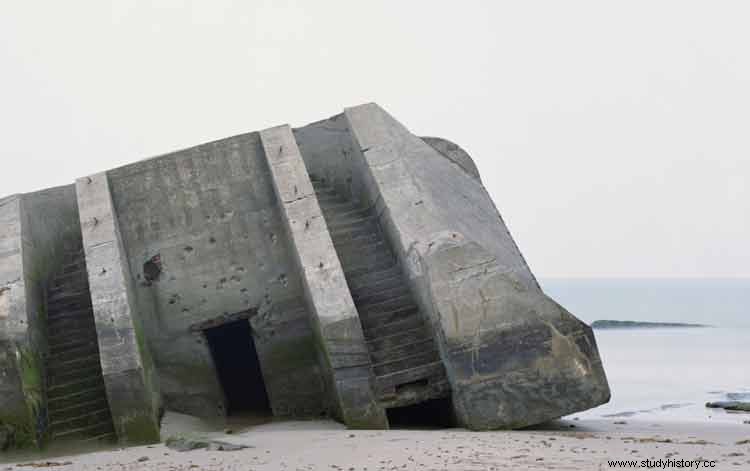Mark Wilson is a London photographer who has been documenting the changes that man has made to the landscape for 15 years. His latest project has been The Last Stand , where he picks up the traces of the wars of the 20th century that still remain in the United Kingdom and northern Europe.
The Last Stand. Northern Europe summarizes in one publication the work he has carried out since 2010 over four years in 143 locations along the coasts of the United Kingdom, the Channel Islands, northern and western France, Denmark, Belgium and Norway.
In this impressive graphic document we can assume the enormous magnitude of some military defense structures located on the coasts, today desolate constructions that rise above a landscape that has become mysterious.
This book summarizes this journey of more than 37,000 kilometers in 86 photographs taken during the Second World War. In that tragic war both the Allies and the Nazis fortified the coast of northern Europe with bunkers and casemates, gun emplacements and huge barriers designed to repel ships and tanks.

After the Normandy landings, the Allies abandoned all these bastions and eighty years later we are left with their ruins.
It does not seem that Mark Wilson's work was easy, since the success of his snapshots depended on the weather or the capricious randomness of the tides, which at certain times hid or highlighted the stone buildings in their splendor.
These photos show a somewhat surreal world, which leads us to think if its origin is not known in a past apocalypse, a cataclysm of which only those constructions erected by man are the witness of what happened in a not so distant time.
The book has been published by Triplekite Publishing and has 176 pages in which we can imagine the war actions and surprise incursions; even abstracting ourselves we can hear the echo of the bullets, the artillery and the cries of the soldiers who saved or lost their lives in those places.
Via:Wired
